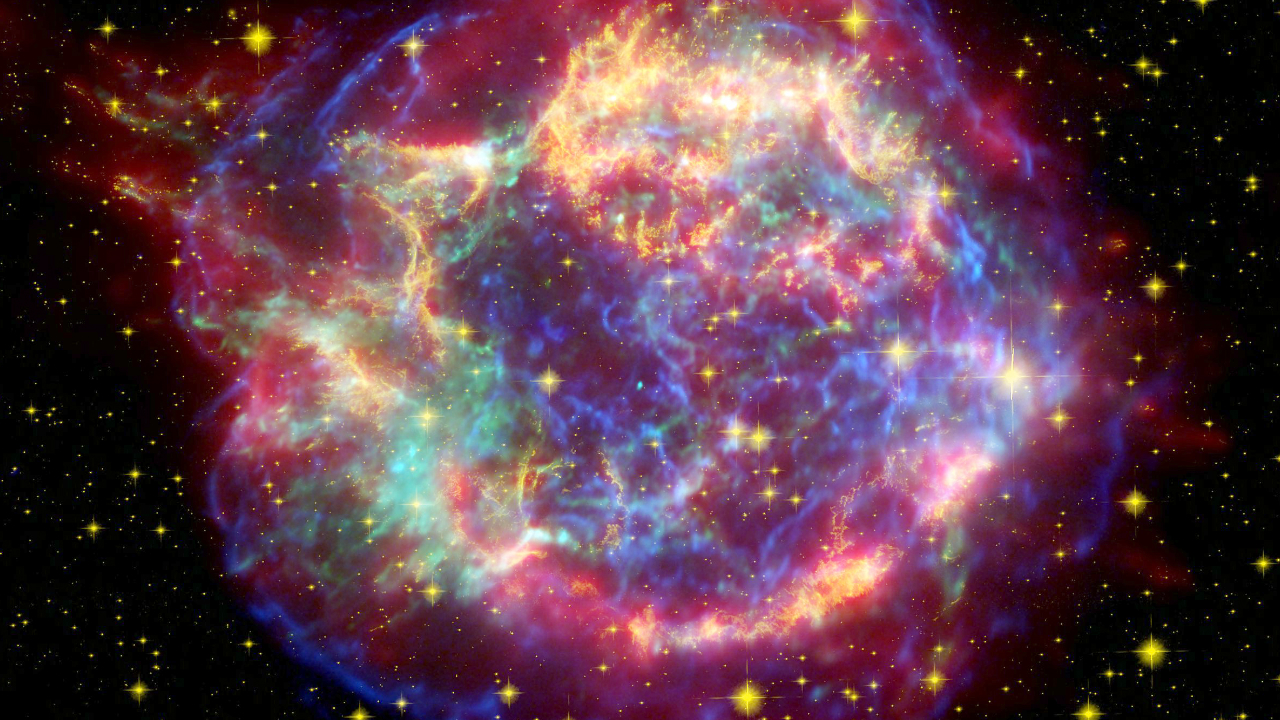Detecting Superfast Matter
Scientists always suspected supernova remnants could speed up cosmic rays, the streams of charged particles that exist throughout space. Now they have proof. NASA’s Fermi Gamma-ray Space Telescope caught two supernova remnants—IC 443 and W44—red-handed as they accelerated cosmic rays to near the speed of light. As cosmic rays travel through the Milky Way galaxy, magnetic fields scramble their paths. By the time the particles reach Earth, the tracks leading back to their source are so complex they’re completely untraceable. So scientists came up with an indirect method for identifying the origins of these particles: observing gamma-ray emissions created by the interaction of accelerated cosmic rays with clouds of interstellar gas. Watch the video to learn more.

A NASA space telescope pinpoints a source of high-energy cosmic rays.
Watch this narrated video to find out how supernova remnants accelerate cosmic rays to near the speed of light.

Cosmic rays (blue) wander randomly through the galaxy, while gamma rays (magenta) travel to Earth straight from their source.

W44 supernova remnant, shown here in multiple wavelengths, including gamma rays (magenta).

NASA's Fermi Gamma-ray Space Telescope launched into space in 2008.
For More Information
See NASA.gov
Credits
Please give credit for this item to:
NASA's Goddard Space Flight Center
Cover image courtesy of NASA/DOE/Fermi LAT Collaboration, Tom Bash and John Fox/Adam Block/NOAO/AURA/NSF, JPL-Caltech/UCLA
W44 image courtesy of NASA/DOE/Fermi LAT Collaboration, NRAO/AUI, JPL-Caltech, ROSAT
-
Animators
- Scott Wiessinger (USRA)
- Walt Feimer (HTSI)
-
Video editor
- Scott Wiessinger (USRA)
-
Writers
- Scott Wiessinger (KBR Wyle Services, LLC)
- Talya Lerner (NASA/GSFC)
- Francis Reddy (University of Maryland College Park)
-
Narrator
- Scott Wiessinger (USRA)
-
Producer
- Scott Wiessinger (USRA)
-
Scientists
- Stefan Funk (KIPAC)
- Elizabeth Hays (NASA/GSFC)
Release date
This page was originally published on Tuesday, August 6, 2013.
This page was last updated on Wednesday, May 3, 2023 at 1:51 PM EDT.
